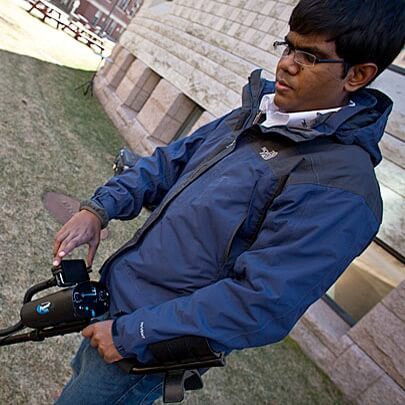News
Lahiru Jayatilaka (above) and Krzysztof Gajos have helped develop a new and improved means of finding and removing land mines from current and former war zones. (Justin Ide/Harvard Staff Photograph.)
Land mines remain among the most destructive remnants of 20th century warfare, continuing to slow resettlement and hinder recovery in many former war zones.
While mine-clearing protocols have improved substantially since World War II, the technology used to locate buried landmines has changed little: De-miners use metal detectors to find and identify mines. On a battlefield strewn with metal debris, differentiating lethal mines from benign cans, wires, and casings is enormously time consuming.
Now, computer scientists at the Harvard School of Engineering and Applied Sciences (SEAS) have designed an elegant system that ties in smartphones to assist humanitarian de-miners by augmenting the information supplied by their metal detectors. Their system, known as pattern enhancement tool for assisting land mine sensing (PETALS), and which will be presented at this week’s Conference on Human Factors in Computing Systems, takes de-mining advances in a new direction.
“We want to support people in the field with minimal invasiveness. Without changing their sweeping style, without giving them new procedures, this technology allows them to better visualize what they are detecting,” explained SEAS researcher Lahiru Jayatilaka, who is working with Assistant Professor of Computer Science Krzysztof Gajos at SEAS, James Staszewski of Carnegie Mellon University, and Luca Bertuccelli of Massachusetts Institute of Technology.
Topics: Computer Science
Cutting-edge science delivered direct to your inbox.
Join the Harvard SEAS mailing list.



